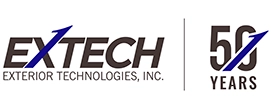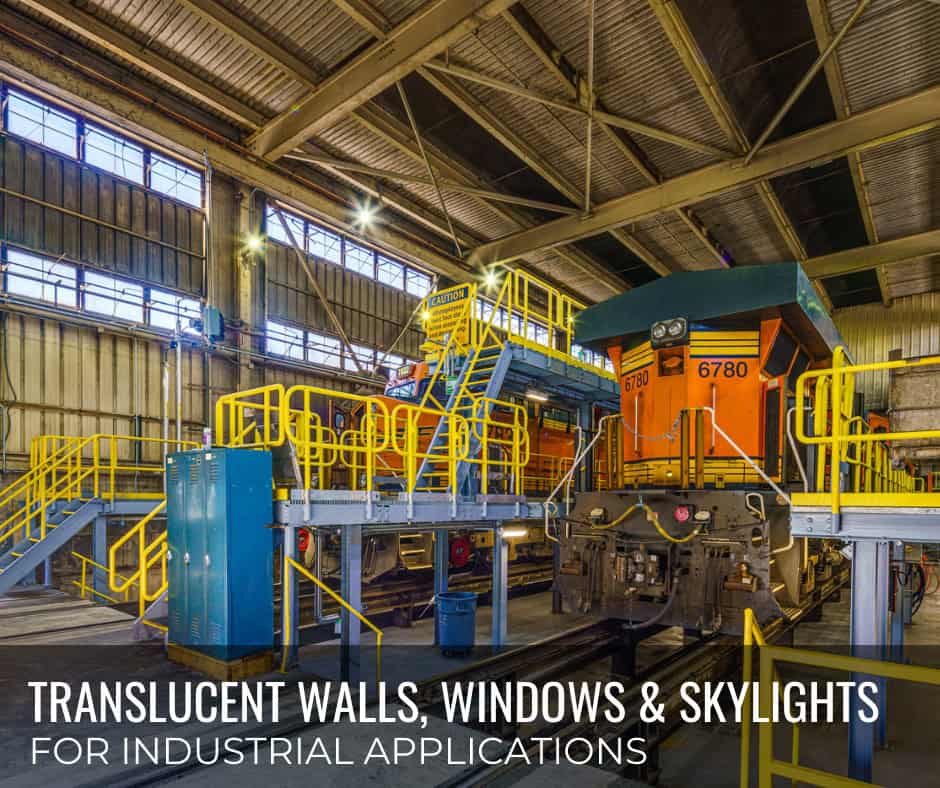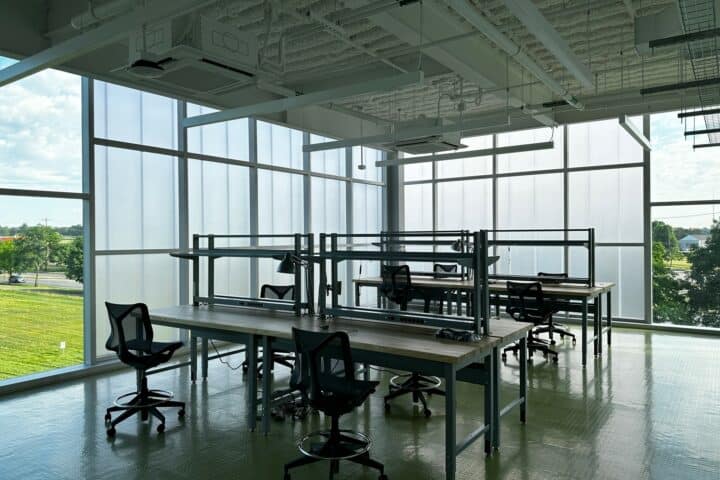Adding polycarbonate windows, translucent walls, and skylight systems to industrial buildings can add many benefits including improved safety, better work environment, and more. Not only can outdated, broken windows and skylights be an eyesore—they can contribute to soaring heating and cooling costs. Adding operable windows that can stay open during rainfall can improve ventilation while adding natural light to a space.
Natural Light & Ventilation
The obvious benefit for adding translucent walls, skylights, or windows to a space is better light. Polycarbonate systems allow natural sunlight to enter. This reduces the need for artificial lighting, leading to potential energy savings. Polycarbonate systems provide diffused light, leading to less visual strain for workers.
Operable windows provide massive ventilation for industrial spaces, reducing cooling loads by bringing cool air in – even during rainfall.
Energy Efficiency
By adding natural light, industrial facilities can rely less on artificial light, reducing energy consumption and contributing to overall energy efficiency goals. By replacing broken or drafty windows and skylights with new ones, HVAC systems do not need to work as hard. This can result in noticeable savings in large warehouses or manufacturing plants where lighting, heating, and cooling costs can be substantial.
Improved Environment for Workers
Natural light has been shown to enhance the working environment by reducing eye strain, improving mood, and increasing productivity among workers. It also helps maintain the circadian rhythm of employees, leading to better overall well-being.
Durability and Safety
Polycarbonate is known for its durability and impact resistance, making it suitable for industrial environments where safety is a top priority. It can withstand harsh weather conditions and accidental impacts.
Design Flexibility
Polycarbonate can be cold-formed to a radius and is available with many translucencies, colors, and finishes, offering flexibility in design. This allows for customized solutions that fit specific industrial needs, whether it’s a window retrofit, overglazing, or skylights with different slopes and configurations.
UV Protection
Polycarbonate offers UV protection, which can help reduce fading of materials and products within the industrial space. This is particularly important for industries dealing with sensitive materials or products. This also keeps the system itself from delaminating, changing color, or deteriorating over time.
Maintenance and Longevity
Polycarbonate windows, translucent walls, and skylights are easy to maintain and require little to no upkeep. They retain their clarity and structural integrity over time, reducing long-term maintenance costs.
Key Considerations
Cost
If a glass window system is being replaced, a new system that can fit polycarbonate panels will likely need to be installed, since rabbet depths differ from glass and polycarbonate. It’s important to choose a system for polycarbonate panels that allows for thermal movement.
Material
Where 100% visibility is non-negotiable, glass panels will need to be specified rather than polycarbonate. If light without glare is the main concern, then polycarbonate panels can provide plenty of diffused, natural light.
Heat Transmission
SHGC, U-factor, and LT vary depending upon which glazing material and finish is chosen.
Overall, the decision to install polycarbonate windows and skylight systems should be based on a careful evaluation of these factors, specific needs, and the expected return on investment in terms of energy savings, worker satisfaction, and operational efficiency.




